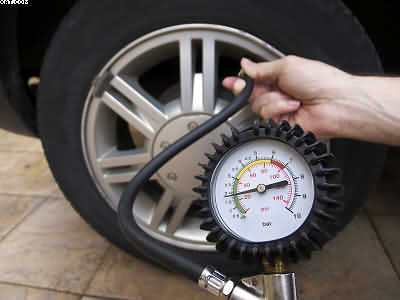Table of Contents
Tyre Pressures Looked At

Tyre Pressures Looked At
Pressure is the force exerted on a surface per unit area.
In simpler terms, it’s the force applied to a specific area. You might be familiar with the concept from everyday phrases like ‘feeling the pressure’ or ‘applying pressure to a wound’. However, when it comes to understanding tyre pressure, the measurements can seem a bit tricky, and knowing where to find this information is crucial. So, let’s break it down for you.
There are three common measurements of tyre pressure: PSI (pounds per square inch), BAR, and kPa (kilopascals). Depending on your vehicle, you might need to convert from one unit to another. Understanding these measurements is essential for maintaining your tyres properly.
Tyre inflation pressure refers to the amount of air pumped into your tyre, measured in PSI, BAR, or kPa. Your vehicle manufacturer provides a recommended tyre pressure, usually found in the vehicle’s manual or on a sticker inside the driver’s door. This recommended pressure ensures optimal performance, safety, and fuel efficiency.
Why Tyre Pressure Matters- Tyre Pressures Looked At
Maintaining the correct tyre pressure is crucial for several reasons:
- Safety: Under-inflated or over-inflated tyres can lead to poor handling, increased stopping distances, and a higher risk of blowouts.
- Fuel Efficiency: Properly inflated tyres reduce rolling resistance, which means your vehicle uses less fuel.
- Tyre Longevity: Correct pressure helps your tyres wear evenly, extending their lifespan.
How to Check and Adjust Tyre Pressure
- Find the Recommended Pressure: As mentioned, look for the recommended tyre pressure in your vehicle’s manual or on a sticker inside the driver’s door.
- Use a Reliable Gauge: A digital tyre pressure gauge is often more accurate than a mechanical one. Check the pressure when the tyres are cold, as driving heats them up and gives a false reading.
- Adjust as Necessary: If the pressure is too low, add air until you reach the recommended level. If it’s too high, release some air.
Converting Between Units- Tyre Pressures Looked At
Understanding how to convert between PSI, BAR, and kPa can be helpful, especially if you travel or move to a region using a different unit of measurement. Here’s a quick guide:
- PSI to BAR: 1 PSI ≈ 0.0689 BAR
- PSI to kPa: 1 PSI ≈ 6.895 kPa
- BAR to PSI: 1 BAR ≈ 14.5038 PSI
- BAR to kPa: 1 BAR ≈ 100 kPa
- kPa to PSI: 1 kPa ≈ 0.145 PSI
- kPa to BAR: 1 kPa ≈ 0.01 BAR
Tips for Maintaining Proper Tyre Pressure
- Regular Checks: Make it a habit to check your tyre pressure at least once a month and before long journeys.
- Seasonal Changes: Tyre pressure can drop in cold weather, so check more frequently during winter.
- Spare Tyre: Don’t forget to check the pressure of your spare tyre. You never know when you might need it. Local Interest: Halifax and Tyres- Tyre Pressures Looked at.
For those of us in Halifax and the surrounding areas, it’s important to remember that our often unpredictable weather can affect tyre pressure. Cold snaps can reduce pressure, while warmer spells can increase it.
Regular checks are even more crucial here to ensure your tyres are always in top condition. Additionally, with the scenic drives around the Yorkshire Dales and beyond, maintaining proper tyre pressure ensures you can enjoy these routes safely and efficiently.

In conclusion, understanding and maintaining the correct tyre pressure is a simple yet vital aspect of vehicle maintenance. It enhances safety, fuel efficiency, and the lifespan of your tyres.
So next time you’re checking your tyres, remember to take a moment to ensure they’re properly inflated—your car (and wallet) will thank you!
- Winter Tyres-A Women’s guide
- Caravan tyre safety Advice
- Hello tyres, world: Winter Tyres blog
- Effectiveness-Winter Tyres
- Winter Tyres versus 4×4
- Winter Tyres-A Women’s guide - April 23, 2025
- Caravan tyre safety Advice - April 22, 2025
- Hello tyres, world: Winter Tyres blog - April 21, 2025
